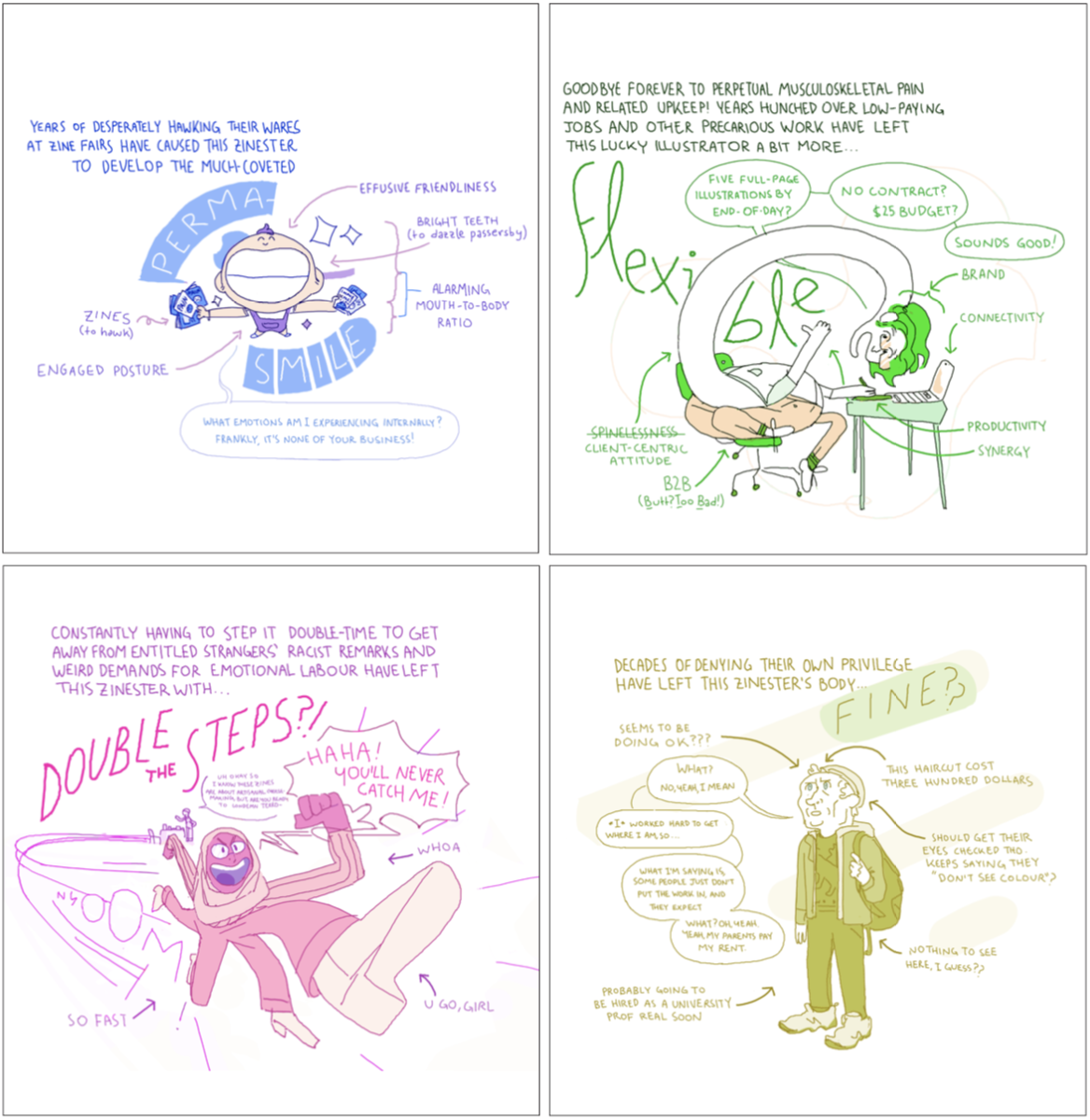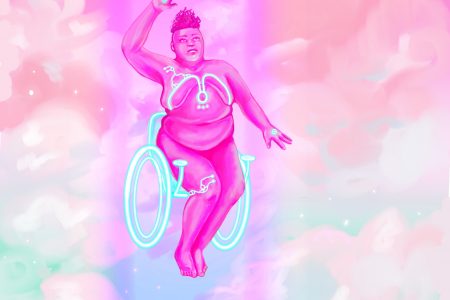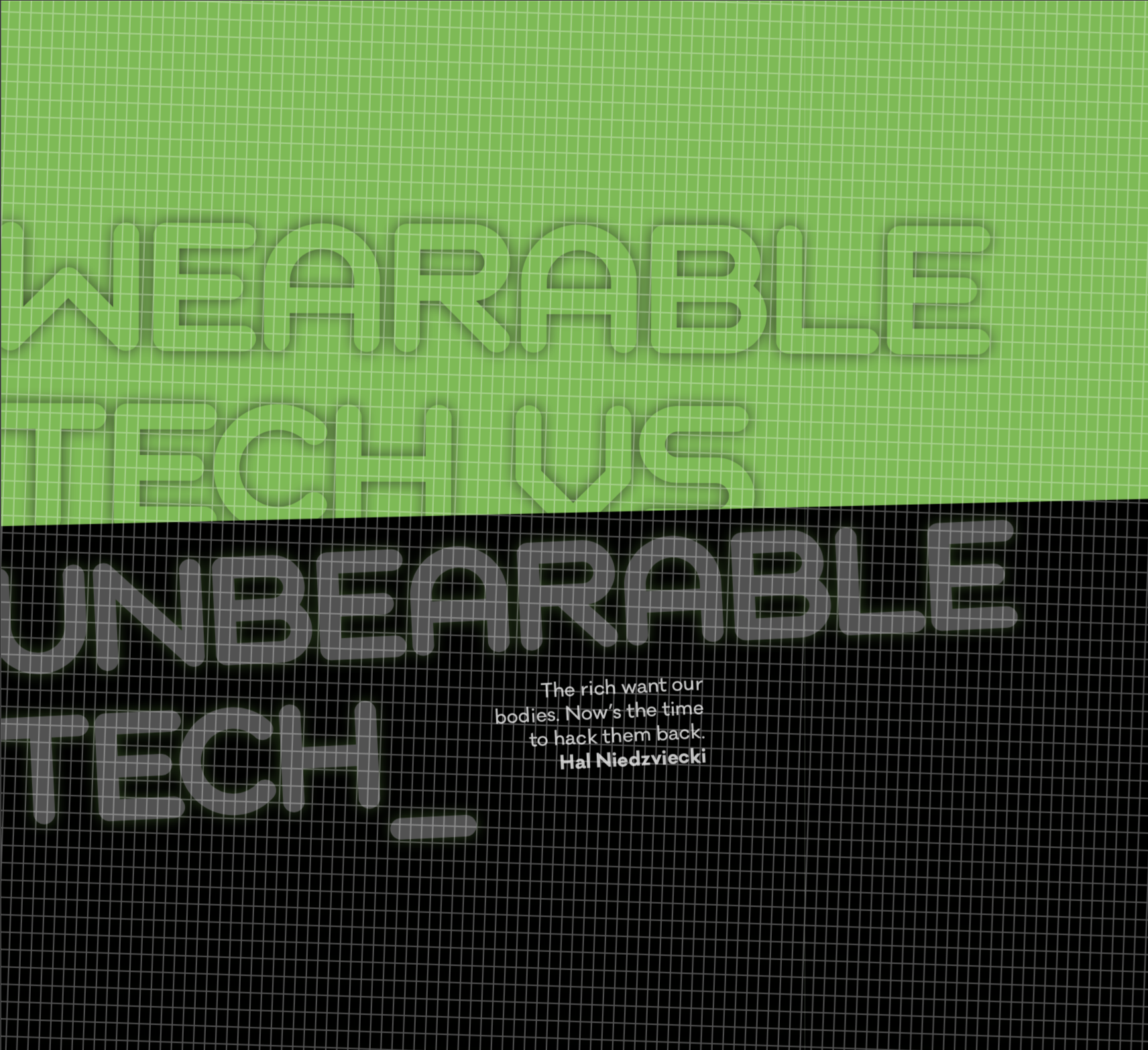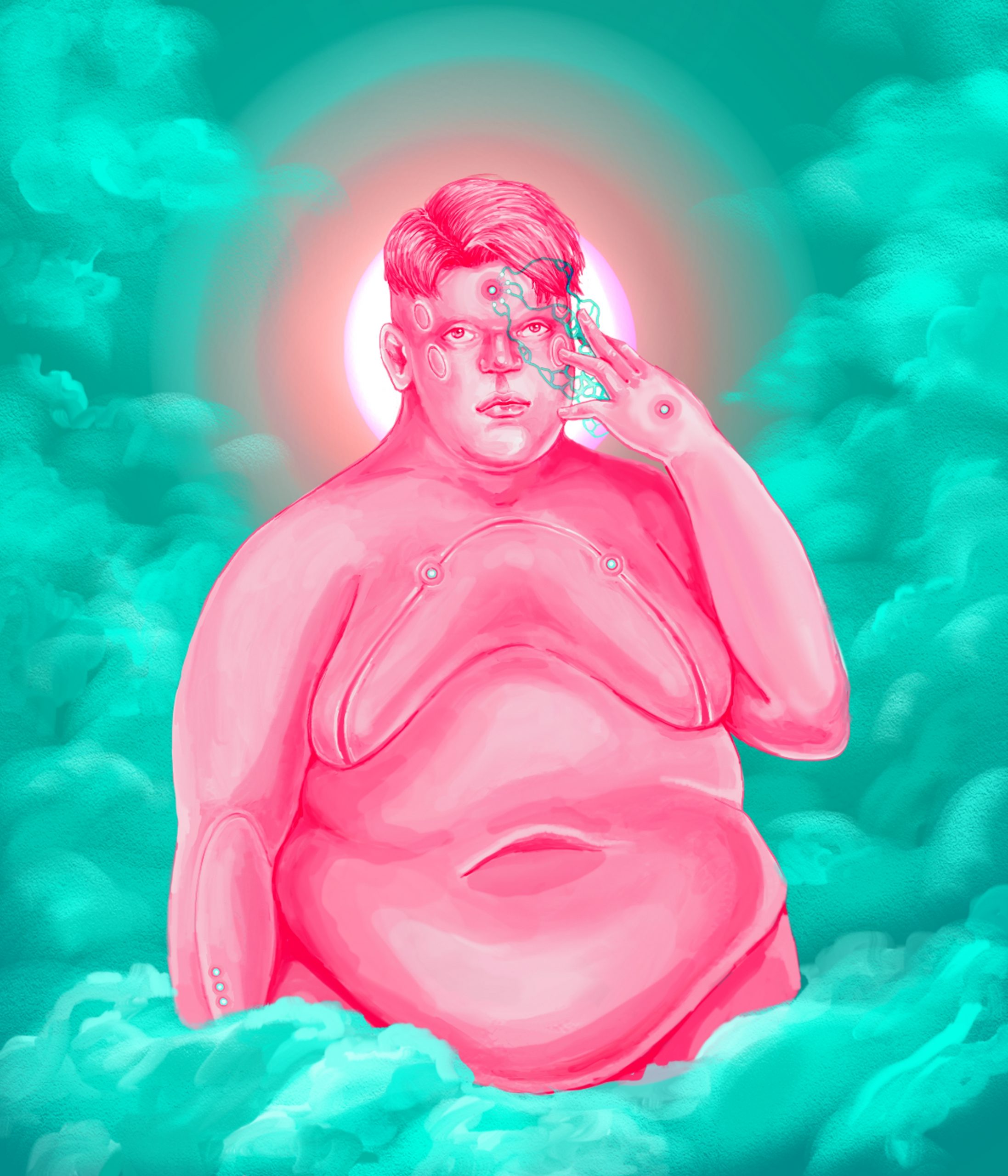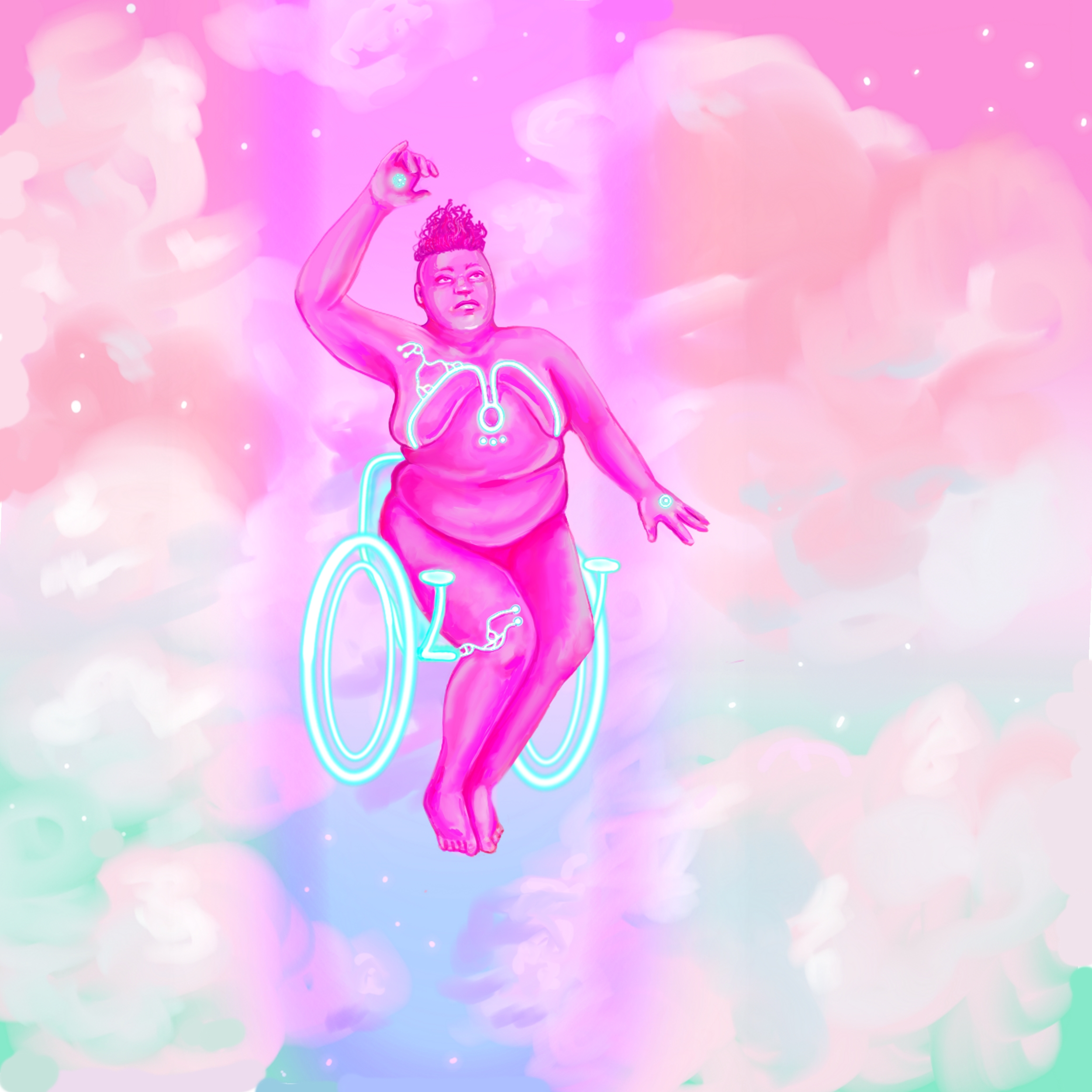
“I don’t see nature and technology as being at odds with each other.
In the universe I have created in my head, tech is an extension of the biological self and even draws power from the natural world.”
You’ll notice our Summer 2020 issue’s cover image is a work of ethereal beauty.
It’s a recent artwork by prettyboycrybaby, a 25-year-old queer artist based in Philadelphia. They paint glowing, empowered figures, explaining that the universe is populate by “all fat bodies in the future.”
As we developed this issue, BP editor Anisa Rawhani chatted with the artist about their work and how they use these powerful images to resist, reimagine, and transcend societies that treat bodies like their own as though they are a problem and shouldn’t exist.
You feature figures whose bodies are often excluded from the mainstream. What draws you to focus your illustrations on these figures?
As a queer person with a fat body I’ve had to learn how to see myself beyond the parameters the world has set for me. Drawing marginalized bodies is a large part of how I have been able to unlearn these restrictions for myself. It is very rare that I see content centering bodies like mine. There are many ways in which I feel either completely invisible or over scrutinized under the gaze of society. Centering these figures in my work is how I take control of the lens.
What role do the sci-fi and futuristic elements play?
The concept that there will be fat and marginalized bodies taking up space in the future in and of itself is a radical idea in our society. For the most part, when we see fat bodies depicted in sci-fi they are made into dehumanizing tropes about laziness and the deterioration of society. I use futuristic elements in my work as a way of subverting these stereotypes and painting my own narrative of the future. I draw most of my figures with cyborg-like features as a representation of the self editing that queer, gender nonconforming, neurodiverse, and those with marginalized bodies have had to do to survive.
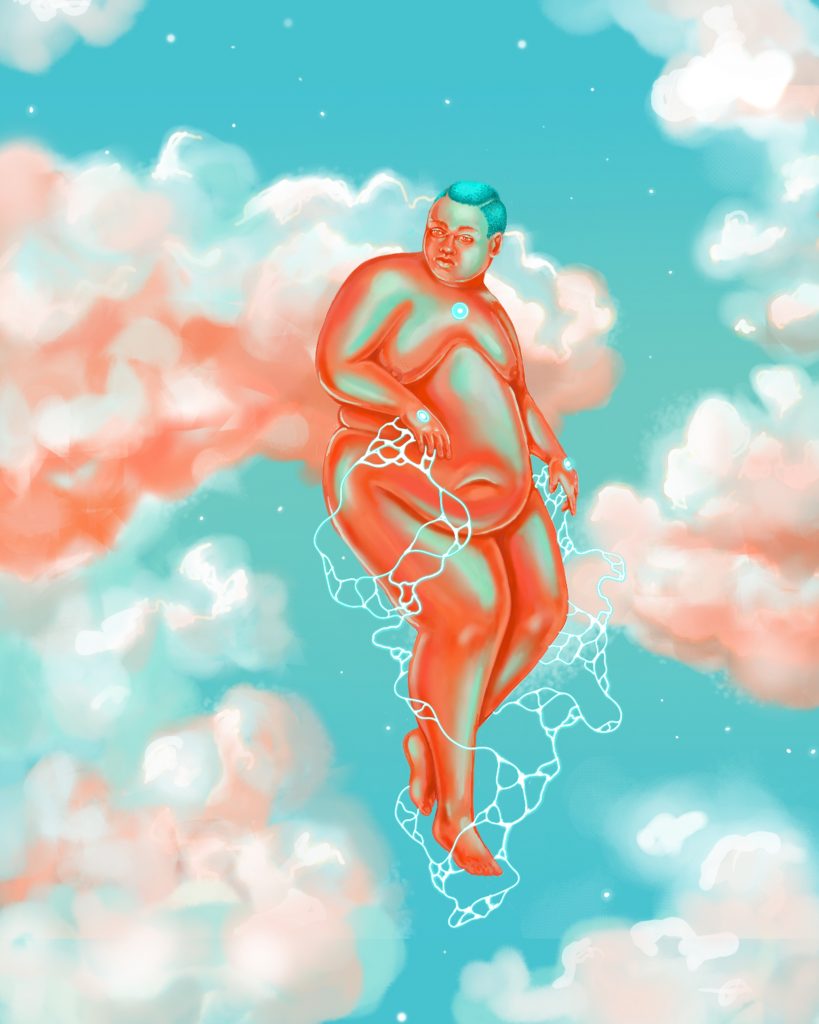
People within these groups have to do a lot of self creation and fine tuning to live in a world that says they should not exist. There is something liberating to me about the concept that these self alterations, whether mental or physical, can become supernatural powers.
A lot of your futuristic figures are set in the sky. It’s an interesting contrast in nature and technology. Is there a reason behind that?
I draw a lot of inspiration from nature, though my art is science fiction based. I don’t see nature and technology as being at odds with each other. In the universe I have created in my head, tech is an extension of the biological self and even draws power from the natural world. This is why I tend to make organic-like circuitry embedded in or extending out of many of my figures and set them in dream-like natural settings.
Some of your works appear to be self-portraits. What do you learn from painting yourself?
I used art throughout my childhood and adolescence as a tool for coping with my depression, social anxiety, eating disorder, and gender dysphoria. In a way, my current work is still an extension of that for me and comes from a deeply personal and vulnerable space. Even when the figure I’m drawing is not literally meant to be me, sometimes I still seep in.
Our focus for this issue is bodyhacking. Do you practice anything you consider to be bodyhacking?
I would consider my approach to my mental health to be bodyhacking. I utilize my own methods of framing and hacking my brain chemistry to create balance in my mind and body.

